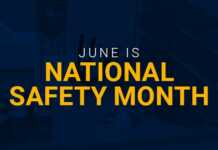Safety observations are a vital part of a proactive safety program. One of the main reasons to conduct safety observations is to understand at-risk and unsafe behavior BEFORE an incident or injury occurs. In turn, this allows for a change in the process or situation to reduce the likelihood of a negative consequence such as an injury.
What a safety observation program will do for you:
- Prevent injuries before they occur
- Aid in bringing employees together toward a common goal
- Build a safety culture within different areas of the organization
- Lower incident rates and premiums
Maintain your program for the long term
As with any new process or program, allocating adequate resources upfront is imperative to the success of the safety observation program. Many organizations begin an observation program without putting in a process to maintain it over the long term. Since the process relies on feedback from users, gathering accurate data over a sustained time gives the most accurate data for a safety observation program.
The observation process itself can be very simple or more complex. At the basic level, it involves a person/persons observing a part of the work process to identify at-risk activities. The information that is gathered is then added to the whole so that conclusions can be made as to what changes are needed. Many times, the person performing the observation will focus on the human behavior activity of the process, but attention should be given to the equipment and work environment as well.
Identify where injuries occur
Since a safety observation program is a proactive process, it should be a leading indicator of future injuries or incidents. At some point near the beginning of the process, observations should focus on areas where the most injuries/incidents have occurred so that corrective measures can be implemented to prevent future occurrences. Then after high historical area rates have declined to an acceptable level, the program can focus on new areas. Check out ICW Group’s webinar on conducting impactful safety observations for help.
By combining a safety observation program with an existing program, measures can be taken to prevent injuries. This will align with many organization goals and help to increase bottom-line numbers.

















